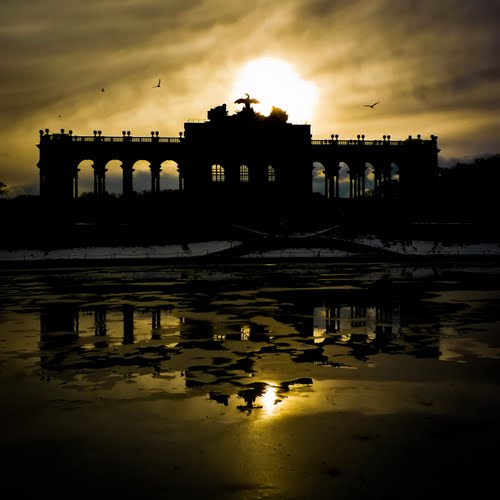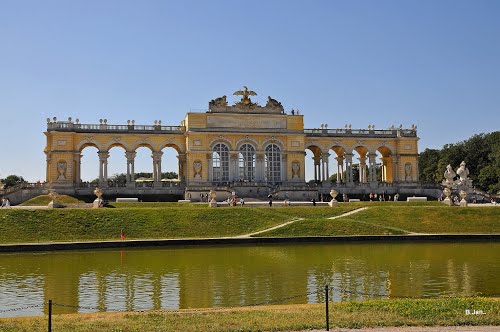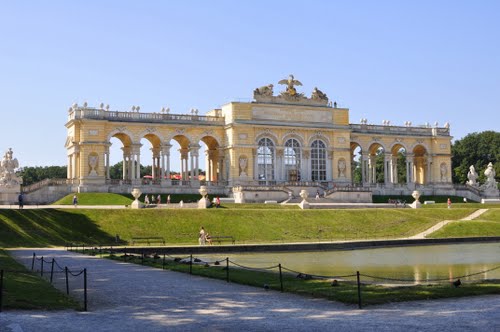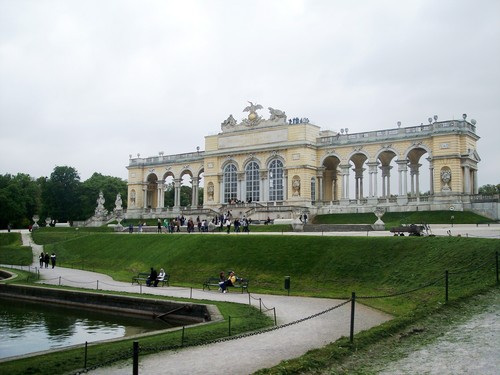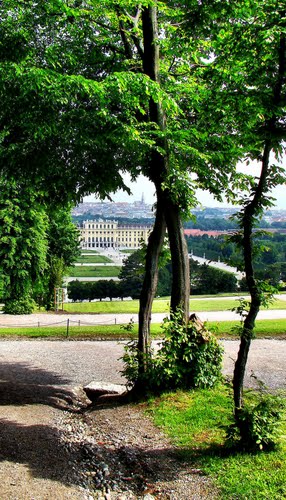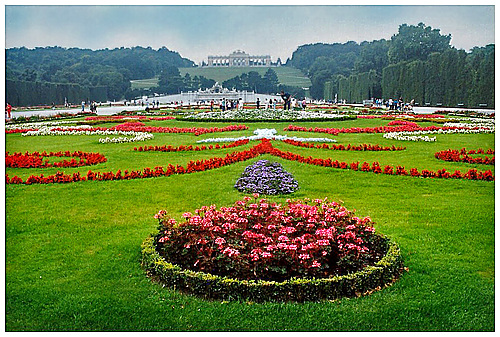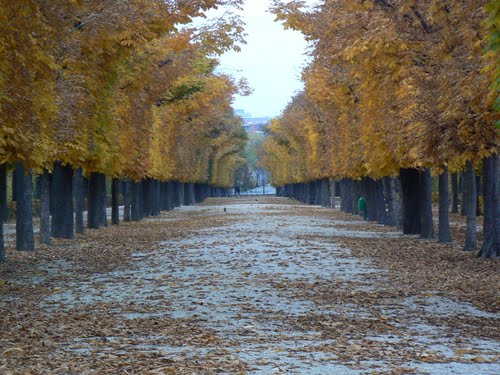The sculpted garden space between the palace and the Sun Fountain is called the Great Parterre. The French garden, a big part of the area, was planned by Jean Trehet, a disciple of Andre Le Notre, in 1695. It contains, among other things, a maze.
The complex however includes many more attractions: Besides the Tiergarten, an orangerie erected around 1755, staple luxuries of European palaces of its type, a palm house (replacing, by 1882, around ten earlier and smaller glass houses in the western part of the park) is noteworthy. Western parts were turned into English garden style in 1828–1852.
The area called Meidlinger Vertiefung (en: depression of Meidling) to the west of the castle was turned into a play area and drill ground for the children of the Habsburgs in the 19th century. At this time it was common to use parks for the military education of young princes. Whereas the miniature bastion, which was built for this purpose, does not exist anymore, the garden pavilion that was used as shelter still does. It was turned into a café in 1927 and is known as Landtmann’s Jausen Station since 2013.
At the outmost western edge, a botanical garden going back to an earlier arboretum was re-arranged in 1828, when the Old Palm House was built. A modern enclosure for Orangutans, was restored besides a restaurant and office rooms in 2009.
Sculptures
The Great Parterre of Schönbrunn is lined with 32 sculptures, which represent deities and virtues.
Gloriette
The garden axis points towards a 60-metre-high hill (200 ft), which since 1775 has been crowned by the Gloriette structure (Fischer von Erlach had initially planned to erect the main palace on the top of this hill).
Maria Theresa decided Gloriette should be designed to glorify Habsburg power and the Just War (a war that would be carried out of "necessity" and lead to peace), and thereby ordered to recycle "otherwise useless stone" which was left from the almost-demolition of Schloss Neugebaude. The same material was also to be used for the Roman ruin.
The Gloriette was destroyed in the Second World War, but had already been restored by 1947, and was restored again in 1995.
The Gloriette today houses a café and an observation deck, which provides panoramic views of the city.
Roman Ruins
Originally known as the Ruin of Carthage, the Roman Ruin is a set of follies that was designed by the architect Johann Ferdinand Hetzendorf von Hohenberg and erected as an entirely new architectural feature in 1778. Fully integrated into its parkland surroundings, this architectural ensemble should be understood as a picturesque horticultural feature and not simply as a ruin, which due to lack of maintenance it had increasingly grown to resemble prior to its recent restoration.
The fashion for picturesque ruins that became widespread with the rise of the Romantic movement soon after the middle of the 18th century symbolize both the decline of once great powers and the preservation of the remains of a heroic past. Erected at the same time not far from the Roman Ruin, the Obelisk Fountain was intended to complete the iconographic program of the park at Schönbrunn as a symbol of stability and permanence.
The Roman Ruin consists of a rectangular pool enclosed by a massive arch with lateral walls, evoking the impression of an ancient edifice slowly crumbling into the ground. In the pool in front of the ruin is a seemingly haphazard arrangement of stone fragments supporting a figural group which symbolizes the rivers Vltava and Elbe.




